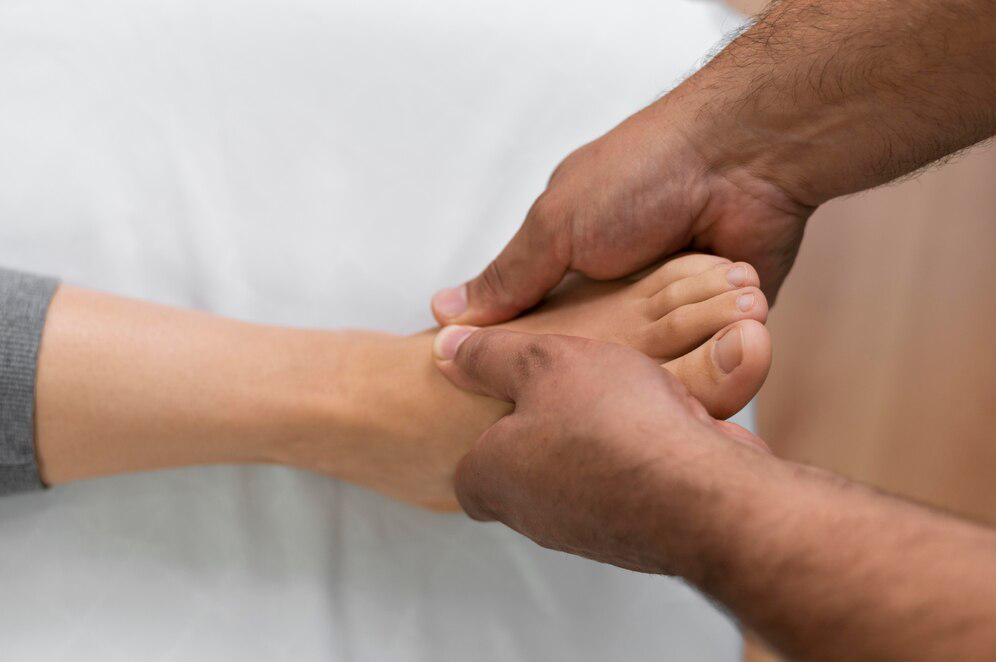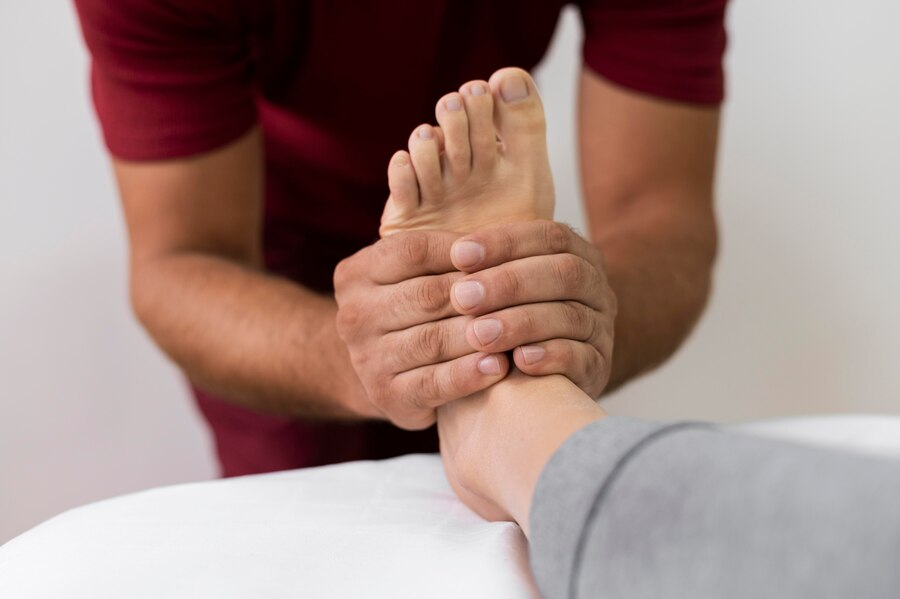In our quest for relief from chronic pain and stress, many of us have turned to traditional or alternative healing methods. One such method that has gained popularity over the years is acupressure. Rooted in the principles of traditional Chinese medicine (TCM), acupressure offers a natural approach to managing pain and promoting overall wellness. But what exactly is acupressure, and how does it work? This blog will delve into the science behind acupressure, its benefits for pain relief, and practical tips on how to use it effectively.
Understanding Acupressure
Acupressure is an ancient healing technique that involves applying pressure to specific points on the body. These points, known as acupoints, are believed to be interconnected through pathways called meridians. According to TCM, energy, or “qi” (pronounced “chee”), flows through these meridians, and disruptions or imbalances in this flow can lead to pain or illness.
The goal of acupressure is to restore the balance of qi by stimulating these points. This is achieved by using various techniques, such as finger pressure, massage, or even the use of tools. Unlike acupuncture, which uses needles, acupressure relies on the application of pressure, making it a non-invasive and accessible option for many.
How Acupressure Works
The science behind acupressure is complex and multifaceted. While TCM provides a framework for understanding its effectiveness, modern research has also explored how acupressure influences the body. Here are some key mechanisms through which acupressure is believed to work:
Pain Gate Control Theory
Acupressure may work by stimulating the nervous system to release endorphins, which are natural painkillers. According to the pain gate control theory, applying pressure to acupoints can help “close the gate” on pain signals, reducing their transmission to the brain.
Increased Blood Flow
Applying pressure to acupoints can improve circulation in the affected area. This increased blood flow helps to deliver oxygen and nutrients while removing waste products, promoting healing and reducing pain.
Relaxation Response
Acupressure can activate the body’s relaxation response, reducing stress and muscle tension. This relaxation can help alleviate pain, particularly if it’s related to muscle strain or stress.
Balancing Qi Flow
From a TCM perspective, acupressure helps to balance the flow of qi, which can be disrupted by stress, poor diet, or other factors. By restoring this balance, acupressure aims to improve overall health and well-being.
Benefits of Acupressure for Pain Relief
Acupressure has been used for centuries to address various types of pain, from headaches to back pain. Here are some of the key benefits of using acupressure for pain relief:
Effective for Chronic Pain
Research indicates that acupressure can significantly alleviate chronic pain conditions like arthritis and fibromyalgia. Regular sessions have been shown to diminish pain intensity and enhance mobility, providing a valuable tool for managing persistent discomfort over time.
Minimally Invasive
Acupressure is a non-invasive therapy that doesn’t require medications or surgical interventions. This makes it an appealing choice for individuals seeking natural methods of pain relief and overall health improvement without the risks associated with more invasive treatments.

Can Be Done at Home
With the right techniques and guidance, acupressure can be performed conveniently at home. This accessibility allows individuals to incorporate acupressure into their daily routines, offering a practical and ongoing approach to managing pain and maintaining wellness.
Reduces Stress and Tension
Acupressure promotes relaxation and reduces muscle tension by stimulating specific points on the body. This holistic method not only helps relieve physical pain but also addresses stress and anxiety, contributing to overall emotional well-being and pain reduction.
Enhances Overall Well-being
Beyond pain relief, acupressure can improve sleep quality, increase energy levels, and elevate mood. By addressing both physical discomfort and emotional stress, acupressure supports a comprehensive approach to health, enhancing overall quality of life and well-being.
Common Acupressure Points for Pain Relief
Understanding which acupressure points to target can make a significant difference in the effectiveness of your sessions. Here are some commonly used acupressure points for pain relief:
- LI4 (Hegu): Located on the hand, between the thumb and index finger, this point is often used for headaches, neck pain, and stress.
- PC6 (Neiguan): Found on the inner forearm, about three finger widths above the wrist crease, this point is beneficial for nausea, carpal tunnel syndrome, and chest pain.
- SP6 (Sanyinjiao): Located on the inner leg, about four finger widths above the ankle bone, this point is used for lower back pain, menstrual cramps, and digestive issues.
- GB34 (Yanglingquan): Found on the outer side of the knee, just below the knee joint, this point is useful for hip pain, knee pain, and muscle stiffness.
- LV3 (Taichong): Located on the top of the foot, between the first and second toes, this point helps with stress, lower back pain, and menstrual issues.
How to Practice Acupressure
Practicing acupressure is relatively straightforward, but it’s important to approach it with mindfulness and care. Here are some steps to get started:
- Find a Comfortable Position: Choose a comfortable position where you can relax. This could be sitting in a chair or lying down.
- Locate the Acupoints: Use a reference guide or consult with a practitioner to locate the acupoints you want to target. You can also use online resources or apps that provide diagrams and instructions.
- Apply Gentle Pressure: Using your fingers, apply gentle, steady pressure to the acupoints. You may use your thumb, index finger, or middle finger. The pressure should be firm but not painful.
- Use Circular Motions: In addition to applying pressure, you can use circular or kneading motions to stimulate the acupoints. This can enhance the effectiveness of the treatment.
- Practice Regularly: For optimal results, practice acupressure regularly. Sessions can last anywhere from 5 to 20 minutes, depending on your needs and comfort level.
- Monitor Your Response: Pay attention to how your body responds to acupressure. If you experience any discomfort or adverse effects, adjust the pressure or consult with a professional.
Integrating Acupressure with Other Therapies
Acupressure can be used in conjunction with other therapies to enhance overall pain relief and well-being. Here are some ways to integrate acupressure with other treatments:
Combining acupressure with massage therapy can provide a comprehensive approach to pain management. While acupressure targets specific points, massage therapy addresses broader muscle groups and tension.
Yoga and Stretching
Incorporating yoga and stretching exercises can complement acupressure by improving flexibility, reducing muscle tension, and enhancing relaxation.
Healthy Lifestyle Choices
A balanced diet, regular exercise, and adequate sleep can support the benefits of acupressure and contribute to overall health.
Mindfulness and Meditation
Practices such as mindfulness and meditation can enhance the relaxation response achieved through acupressure. These practices help manage stress and improve mental well-being.
Precautions and Considerations
While acupressure is generally safe, there are a few precautions to keep in mind:
Consult with a Healthcare Provider
If you have any underlying medical conditions or are pregnant, consult with a healthcare provider before starting acupressure. They can provide guidance on whether acupressure is suitable for you.
Avoid Overly Firm Pressure
Applying excessive pressure to acupoints can cause discomfort or bruising. Always use gentle, controlled pressure and listen to your body’s response.
Seek Professional Guidance
If you’re unsure about how to locate or stimulate acupoints, consider consulting with a qualified acupressure practitioner. They can provide personalized guidance and techniques.
Monitor Your Symptoms
If your symptoms persist or worsen despite acupressure, seek medical advice. Acupressure is a complementary therapy and should not replace conventional medical treatments.
Conclusion
Acupressure offers a natural, effective solution for managing chronic pain, enhancing overall well-being, and reducing stress. Its non-invasive approach makes it an ideal choice for those seeking relief without medication or surgery. By incorporating regular acupressure sessions into a routine, individuals can address pain conditions such as arthritis and fibromyalgia while improving mobility and emotional health. The convenience of practicing acupressure at home supports ongoing pain management and wellness. Integrative Chiropractic in Overland Park highlights the benefits of holistic methods like acupressure as a complement to traditional treatments. For more information or to explore how acupressure can be beneficial, contact 913-451-7500.

